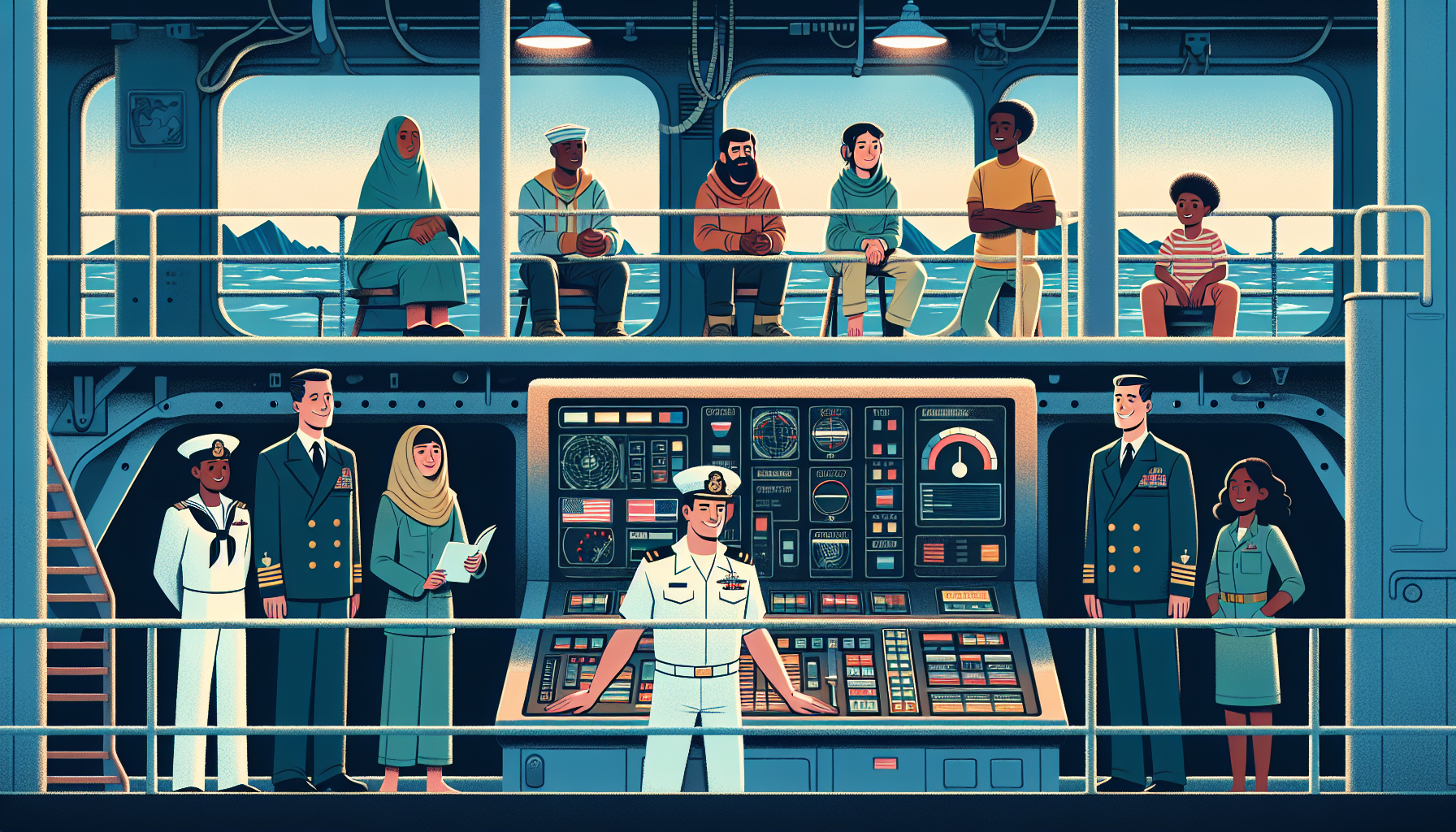Definition
A deception objective in military operations refers to the desired outcome or goal that a deceptive plan or strategy aims to achieve. It is aimed to either mislead, confuse or distract the enemy, causing them to make decisions detrimental to their own operations. Normally, this would involve the adversary changing position, force strength, or capabilities to the deceiver’s advantage.
Key Takeaways
- The “deception objective” in military operations refers to the desired outcome that a military force wishes to achieve by misleading or confusing the enemy. This could involve creating false impressions about the military’s intentions, capabilities, or plans.
- These deceptive strategies can be implemented in various ways. Techniques could include feigning an attack, providing false information, using decoys, or implementing camouflage. The overall goal is to misdirect the enemy’s attention, disrupt their decision-making process, or induce them into taking undesirable actions.
- The success of deception objectives relies heavily on understanding the enemy’s intelligence and perception processes. The deceiver must accurately predict and exploit the enemy’s interpretations or reactions for desired outcomes. Consequently, achieving a deception objective involves a deep understanding of the adversary’s mindset, capabilities, and strategic approach.
Importance
Deception objectives are crucial in military operations because they play a significant role in shaping the outcome of a battle or a war.
This term refers to the intended result that a military wants to achieve by causing an enemy to perceive something inaccurately.
The purpose is to mislead the adversaries into taking actions that are counterproductive to their own interests while advantageous to the deceptive force.
The ultimate goal of deception objectives is to create opportunities for a surprise attack, minimize enemy resistance, conserve one’s own forces, enhance operational security, and increase the probability of mission success.
In essence, the ability to adequately establish and execute deception objectives can make a significant difference in warfare tactics and strategies.
Explanation
The primary purpose of a deception objective in military operations is to manipulate the decision-making processes and perceptions of the enemy. It is employed as a strategic approach to mislead or confuse the adversary.
For instance, it aims to convince the enemy of a pending attack, thus causing them to expend resources or reallocate troops unnecessarily. Besides, it can be used to shift the enemy’s attention away from the real objective or create an illusion of superiority or inferiority to shape the adversary’s expectations or behavior to one’s advantages.
Moreover, the deception objective serves as a vital camouflage tool in military strategy for masking true operations, protecting the lives of military personnel, and maintaining an edge over the enemy. It incorporates several elements, such as feints, ruses, demonstrations or displays, and disinformation campaigns.
Each of these can be crucial in deceiving the enemy and achieving the ultimate military operation’s objectives. In essence, the deception objective is all about exploiting the cognitive biases of the adversary, ultimately controlling the information the enemy needs while concealing the real intentions or actions.
Examples of Deception objective
Operation Bodyguard (World War II): One of the most significant examples of military deception in history are the Allied efforts leading up to the invasion of Normandy in WWII. Codenamed Operation Bodyguard, the Allies concocted a series of false plans and operations to deceive the Axis forces about the actual location and timing of the invasion. The deception involved the creation of a fictitious First U.S. Army Group, supposedly based in South East England and preparing to invade the Pas-de-Calais region, complete with fake radio traffic, dummy equipment, and even a high-profile figurehead in the form of Lieutenant General George S. Patton.
Operation Desert Storm (1991 Gulf War): During the Gulf War, the US-led coalition forces used deception to confuse and misdirect Iraqi forces. They created an elaborate ruse, making it seem as if they were planning to launch a major amphibious attack on the Kuwaiti coastline. This involved the movement of ships and troops, broadcasting radio traffic suggesting imminent attack and other ruse tactics. As a result, considerable Iraqi resources were tied down on the coast when the main Coalition attack was launched into western Kuwait and southern Iraq.
The Yom Kippur War Deception (1973): Prior to the Yom Kippur War, Egypt and Syria carried out a highly successful deception plan against Israel. For months ahead of the surprise attack, Egypt conducted military exercises near the Suez Canal, getting Israel accustomed to seeing Egyptian military activity. At the same time, both Egypt and Syria released information suggesting they had no intention of starting a war. Thus, when the war began on the Jewish holiday of Yom Kippur, Israel was taken by complete surprise.
FAQs about Deception Objective in Military Operations
What is a Deception Objective in Military Operations?
A deception objective in military operations refers to the critical effect that the command seeks to achieve on an adversary. The aim is focused on the adversary decision-maker and is usually accomplished by influencing the opponent’s understandings, beliefs, or expectations.
What is the purpose of a Deception Objective?
The purpose of a deception objective is to manipulate the enemy’s behavior or their understanding of the situation, forcing them into making mistakes or taking actions that are beneficial to your military strategy. It’s a vital component in the broader framework of Psychological Operations.
What are the different types of Deception Objectives?
Deception objectives vary severely depending on the context, but generally, they include Ambiguity Increasing, False-Flag, Feint, Ruse, or Demonstration. Each of these types serves a different purpose and is used depending on the specific tactical, operational, or strategic situation.
How is a Deception Objective accomplished?
A deception objective is accomplished by creating and managing a set of false indicators, concealing the truth, and confusing the enemy. The implementation involves a comprehensive Deception Plan, which integrates all the deceptive elements and is executed in line with the overall operation plan.
What are the ethical considerations of Deception Objectives?
While deception is typically seen as a necessary part of warfare, it does raise ethical discussions. Deception must always adhere to the Laws of Armed Conflict, meaning it cannot involve treachery or saturation, and the distinction between civilians and combatants must still be maintained. Above all, the ultimate aim is always to save lives and prevent unnecessary conflict.
Related Military Operation Terms
I’m sorry for the confusion, but the term “Deception objective” does not typically correlate with VA (Veterans Affairs) benefits. However, if you are looking for terms related to VA benefits, I can provide a list of relevant terms as follows:
“`
- Disability Compensation
- Pension Benefits
- Education Benefits
- Healthcare Benefits
- Vocational Rehabilitation and Employment Services
“`
Please clarify if you need different information or if the terms should be associated with a different context.
Sources for More Information
- Britannica Online: This online encyclopedia provides a comprehensive article about deception operations in military history.
- CIA’s Official Website: The website of the Central Intelligence Agency includes various articles, analysis, and declassified information about the history and effectiveness of deception operations.
- U.S. Army’s Official Website: You can find various articles and publications about deception objectives, how they are developed and implemented in military operations.
- National Defense University Press: This website provides various scholarly articles and publications about military strategy, including the concept of the deception objective.
 Benefits.com Advisors
Benefits.com Advisors
With expertise spanning local, state, and federal benefit programs, our team is dedicated to guiding individuals towards the perfect program tailored to their unique circumstances.
Rise to the top with Peak Benefits!
Join our Peak Benefits Newsletter for the latest news, resources, and offers on all things government benefits.





























